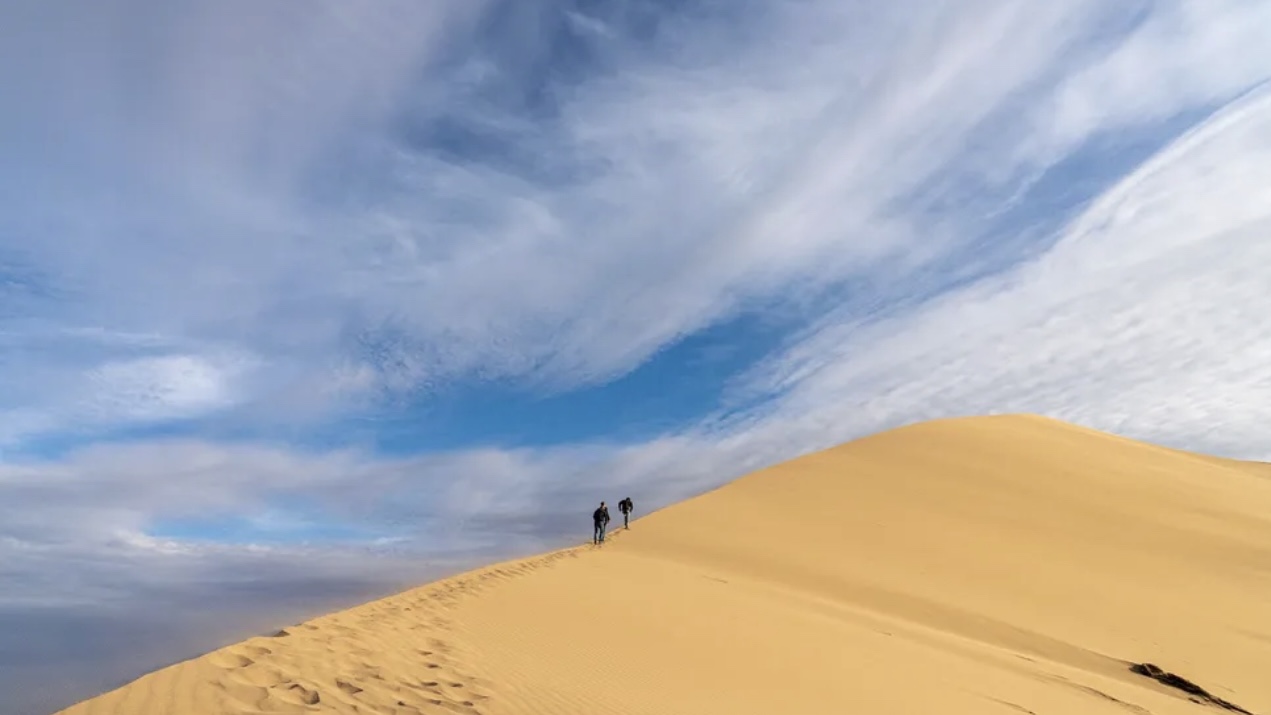ASTANA – On a visit to her native country to discover Kazakhstan’s endless steppes and rugged mountains, photographer Yulia Denisyuk dived into the country’s rich history and shared her journey in a BBC article. Denisyuk was born in Almaty, the former capital of Kazakhstan, and moved to Estonia when she was just three years old. This trip was her first opportunity to explore Kazakhstan’s natural beauty outside the city limits.

Yulia Denisyuk.
“The sky-scraping peaks of the Tian Shan mountain range form a natural barrier between Kazakhstan’s south-eastern corner and neighboring Kyrgyzstan and China. It is here, in the Almaty region, where the country’s most spectacular landscapes lie. After years abroad, I returned to fulfill a dream: getting to see this vast nation beyond my birth city,” she said.
Growing up far away from her native city, Denisyuk started learning about Kazakh identity, history, and its Silk Road legacy more in-depth, realizing there is much more to the nation than just Almaty. Denisyuk noted that her case is common. According to her, despite being 40 times larger than its Caspian neighbor Georgia, only one-ninth as many foreign visitors came to Kazakhstan as Georgia in 2022 – and most stay in the nation’s two largest cities Almaty and Astana.
“But those who venture beyond the cities get to experience a rugged land, where horses and camels graze on the endless steppes and the Indigenous Kazakh culture comes alive,” she wrote.

Kazakhstan’s vast, rugged interior is home to its most stunning scenery and nomadic roots. Photo credit: Yulia Denisyuk.
Denisyuk highlighted Kazakhstan’s layered past: for centuries, nomadic Turkic tribes and Silk Road caravans crossed these steppes with a nomadic state forming in the 15th century.
She said she did not have to travel too far to explore the country’s beauties. Despite Kazakhstan being the world’s ninth-largest country (and the largest landlocked country), its small, south-eastern Almaty region is a national highlight reel. To discover it, Denisyuk drove along the Kuljin stretched eastward to the Chinese border with the Tian Shan mountains appearing in the distance.
“Passing townships on the outskirts of Almaty, we veered south to begin our eventual ascent to Asy Plateau, a 60-kilometer stretch of breathtaking alpine meadow at a nose-bleeding altitude of 3,200 meters. This ancient landscape is an example of Turkic transhumance, a practice still alive in rural Kazakhstan, where shepherds set up camp with their herds on high-altitude pastures in the summer and move down the mountains at the season’s turn,” she wrote in her article.

The Almaty region is home to endless steppes, rugged mountains and alpine lakes Photo credit: Yulia Denisyuk.
As she continued to travel, she noticed that with each kilometer, eras changed.
“At the western end of the plateau, Kazakhstan’s largest astronomical observatory, Assy-Turgen, has been in operation since 1981. Equipped with one of the world’s largest telescopes, it recently made a groundbreaking discovery by observing one of the most powerful explosions in the Universe – an event that occurred five billion light years away,” she notes.
Driving further east on the plateau, Denisyuk spotted mysterious burial mounds called kurgans along the banks of the Asy River.
“These are remains of the Saka culture, a nomadic warrior people that inhabited this area in the Iron Age. The medieval Silk Road caravans chose this route, too, on their way to Kyrgyzstan and China as part of the Unesco-inscribed Chang’an-Tianshan Corridor. Charting the same path as generations before me, I felt a missing piece of my birthplace was starting to take shape,” she said.

Charyn National Park is often compared to the US’ Grand Canyon. Photo credit: Yulia Denisyuk.
By nightfall, Denisyuk reached Saty, where she was welcomed with a festive table spread [dastrakhan] prepared by Kazakh people when guests arrived. Denisyuk noted that a generous welcome made her feel warm and recall sweet childhood memories.
“When I visited my grandmother, long tables would be thrown together for the occasion, our extended relatives gathered, singing folk songs and eating dishes like kazy [horsemeat sausage] and honeyed chak-chak dessert [Fried Honey Cake with Almonds]. Celebrations went on for hours, often lasting well into the night,” she recalled.
Denisyuk’s next stop was the Charyn National Park, often compared to the Grand Canyon in the United States.
“Cut 300m into the earth by the Charyn River, the Charyn Canyon’s 12-million-year-old sediments form a parched, pinnacled landscape of red, yellow and white rock that constantly shifts due to wind and erosion. Dwellings, burial structures and tools from the Stone and Iron Age have all been found here. Awestruck, I descended into the Valley of Castles, a 2.5 kilometer gorge where many of the Valley’s whimsical sedimentary rock formations resemble faces, and I wondered if ancient Kazakhs may have walked this path, too,” she pondered.

When the wind is right, Kazakhstan’s “Singing Dunes” produce a low-pitched sound similar to nomadic throat-singing. Photo credit: Yulia Denisyuk.
Traveling further on, Denisyuk discovered more threads of Kazakhstan’s story hidden in plain sight: the endemic Sogdian ash trees inside the Charyn Canyon are named after the Sogdians, the long-forgotten Silk Road merchants who facilitated the exchange of knowledge and beliefs across the Silk Road.
“As we turned west back towards Almaty, we set our sights on Altyn-Emel, one of Kazakhstan’s largest national parks with deserts, mountains and steppes within its borders. …Its Martian-like red-and-white Aktau mountains date back 400 million years. Just as Kazakhstan was once a melting pot of peoples on the Silk Road, Altyn-Emel today is the meeting place for rare and endangered species – among them Turkmenian kulan donkeys, Bukhara deer, Persian gazelle and the Siberian salamander – seeking refuge in the reserve,” she said.
Denisyuk also discovered Altyn-Emel’s premier treasure, a 240-hectare double sand dune stretching more than three kilometers known as the “Singing Dunes,” or Aigaikum in Kazakh.
“I wanted to hear Aigaikum’s elusive song: under certain conditions, the dune produces a loud, low-pitched vibration sound akin to the nomadic throat-singing tradition that’s being repopularised by young Kazakh folk groups like Turan,” Denisyuk said.
The sights she saw made Denisyuk quieter than usual as she traveled back to Almaty. She reflected on what one of her traveling companions told her: Kazakhstan and its culture are all about the land, and the connection created by traversing its vastness makes Kazakhs who they are.

